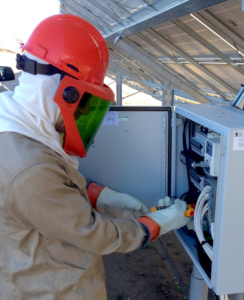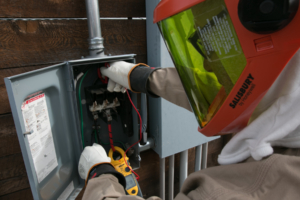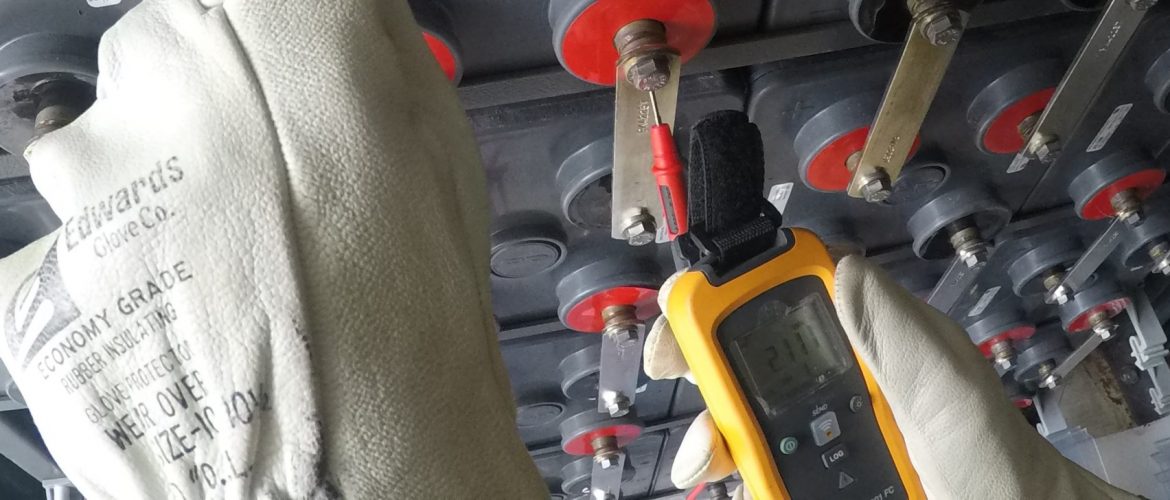Meter Selection For Solar PV Systems
by Joe Villacci – SEIPS Technical Manager
 Choosing the correct meter for electrical testing means paying close attention to the specifications of the meter, testing requirements, and site conditions. Functional options, voltage, current, and safety ratings can vary dramatically between meters, which can easily lead to inaccurate or false readings and job site hazards due to the use of an inappropriate meter. SEIPS technicians often bring a wide variety of meters to the job site for performance testing and troubleshooting, including insulation resistance testers, I-V curve tracing equipment, environmental sensors, and data loggers, but the most common meters we use are standard digital multi-meters and clamp-on ammeters.
Choosing the correct meter for electrical testing means paying close attention to the specifications of the meter, testing requirements, and site conditions. Functional options, voltage, current, and safety ratings can vary dramatically between meters, which can easily lead to inaccurate or false readings and job site hazards due to the use of an inappropriate meter. SEIPS technicians often bring a wide variety of meters to the job site for performance testing and troubleshooting, including insulation resistance testers, I-V curve tracing equipment, environmental sensors, and data loggers, but the most common meters we use are standard digital multi-meters and clamp-on ammeters.
Digital multimeters (DMMs) come in many varieties and ranges of quality and capability. Clamp-on ammeters, whether integrated into a DMM or as a separate meter that plugs into a DMM, offer a non-contact method to measure current, and are the only way to do so when testing currents above the rating of the internal fuse in a DMM. Clamp-on ammeters sense the magnetic field generated by current, and do not require physical contact, opening, or disconnecting of the circuit wires for measurement. In most cases, it’s best to never use the probes of a DMM to test current since mistakes can cause a dangerous and damaging arc. Note many clamp-on meters measure only AC current and there is a limited selection for DC applications, so be sure to select the appropriate meter for the task.
PV array testing commonly includes voltages up to 1500 Vdc. Ac voltages for PV systems vary greatly depending on the point of interconnection and ac distribution configuration, and may require medium and/or high voltage transmission work, which requires additional training, qualifications, and equipment. Circuit current may range from less than an amp on a PV source circuit to thousands of amps from multiple inverter output circuits in parallel. It is critical to understand the basics of meter selection before performing any type of system testing or commissioning.
Resolution is the smallest increment that a meter can display, usually in tenths, hundredths or thousandths (one, two or three decimal places, respectively) of the specific unit (V, A, Ω, etc.).
Accuracy is the maximum difference between the displayed reading and the actual reading. Be sure to determine the accuracy of the meter, using the manufacturer specifications, to confirm it meets your testing requirements.
Range refers to the span between the upper and lower limits of a given unit that a meter can measure, such as a range for current testing. Some meters have multiple range settings, which may improve accuracy. Clamp-on ammeters typically have decreased accuracy at the lower end of their range, especially when testing a low level of current on a meter with a wide range. Meters with multiple range settings are usually more accurate for low current testing since the range can be adjusted to accommodate – a key feature when dealing with PV source circuits, which inherently have relatively low current (< 10 A typical). The selection of dc clamp-on meters that are accurate at low current levels is very limited and they can be more expensive than ac only clamps, so choose wisely!
Many DMM and clamp-on ammeters offer additional functionality, such as the ability to measure inrush current from surge loads (such as a motor or well pump), frequency measurements, data logging options, and max/min/avg measurements. Displays vary as well, including wireless capabilities and LCD screens that can be removed from the meter itself and read remotely.
 Another consideration when choosing a meter is the Overvoltage Installation Category or CAT rating. CAT ratings indicate to what extent the meter’s circuitry has been designed to protect the user from transient overvoltage, which is possible in electrical systems. There are four CAT ratings: CAT I – IV. The higher the CAT rating, the more resistant the meter is to higher transients. The CAT ratings correlate to different electrical distribution categories. Of noted interest is that CAT IV is for ‘any exterior conductor runs.’ This includes exterior PV source or output circuits, whether on a roof, in conduit on the side of a building, or buried. CAT IV meters should also be used when checking voltage at the service entrance.
Another consideration when choosing a meter is the Overvoltage Installation Category or CAT rating. CAT ratings indicate to what extent the meter’s circuitry has been designed to protect the user from transient overvoltage, which is possible in electrical systems. There are four CAT ratings: CAT I – IV. The higher the CAT rating, the more resistant the meter is to higher transients. The CAT ratings correlate to different electrical distribution categories. Of noted interest is that CAT IV is for ‘any exterior conductor runs.’ This includes exterior PV source or output circuits, whether on a roof, in conduit on the side of a building, or buried. CAT IV meters should also be used when checking voltage at the service entrance.
Re-calibration of meters is often overlooked, so be sure to check with the manufacturer and follow their calibration suggestions. Using calibrated meters is a requirement in many commissioning and O&M contracts. Meters that bounce around in the back of a truck or have failing batteries can give you false information and create unsafe conditions. Take special care of your meters, along with personal protective equipment (PPE) – these items protect our lives! Always get appropriate safety training before performing any type of electrical work and don’t forget to RTFM – read that fine manual. Adhering to the manufacturer’s instructions will save time, money, and help keep workers safe!
Contact SEI Professional Services (SEIPS) Today!
SEI Professional Services (SEIPS) leverages decades of experience in the solar industry to take your solar project from concept to reality. No matter what stage you are currently at in your solar project planning or construction – we are here to serve you. SEIPS can assist you as an industry leading solar energy consulting company to ensure your project gets completed on time and within budget for years of reliable clean energy production.
SEIPS provides expert services during every stage of the project development cycle from concept to commissioning and beyond through operations and maintenance (O&M) services. Contact us today and one of our technical specialists will work with you to maximize your solar project. Contact Jeff Ruppert PE, Business Manager / Civil Engineer for SEI Professional Services / SEI Engineering @ (970) 948-5744 or jeff@seisolarpros.bowman.com.

